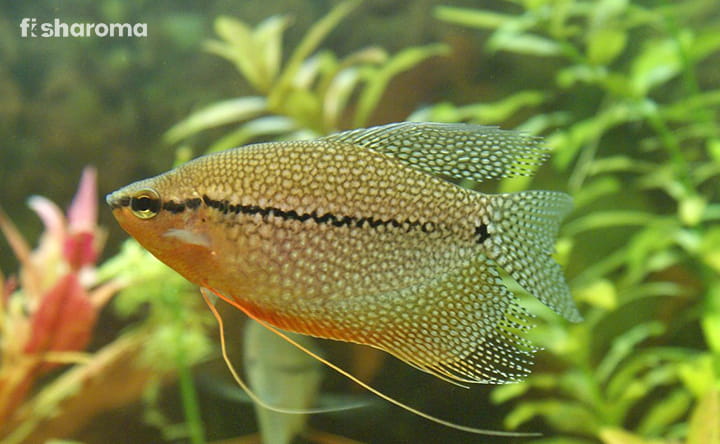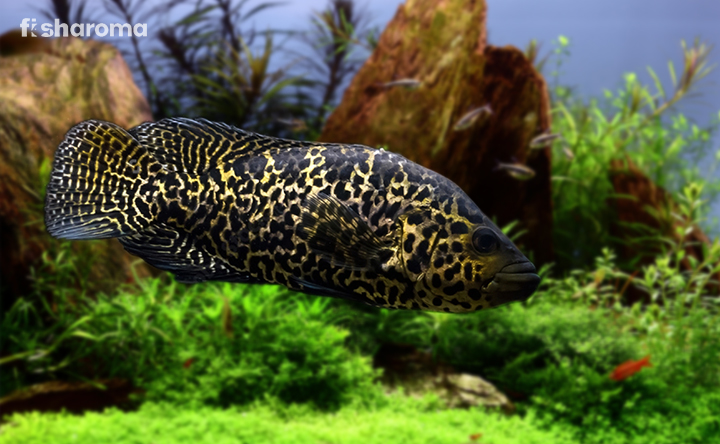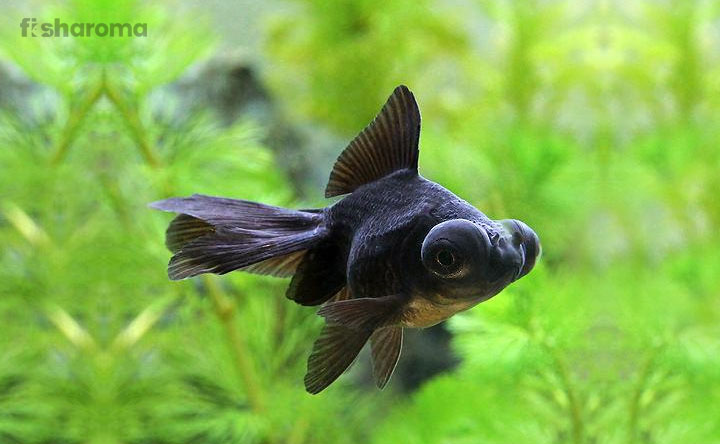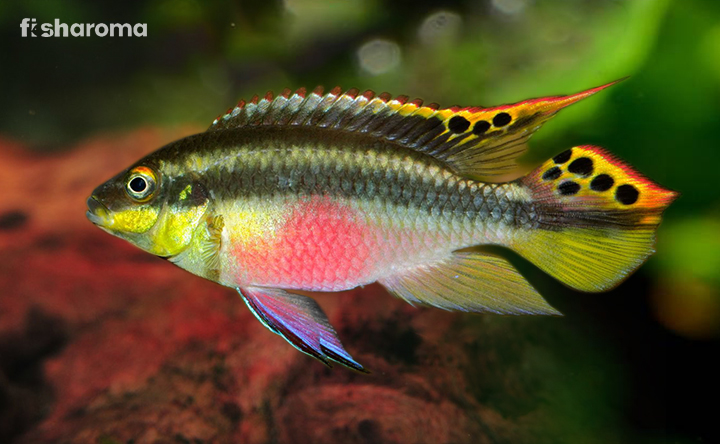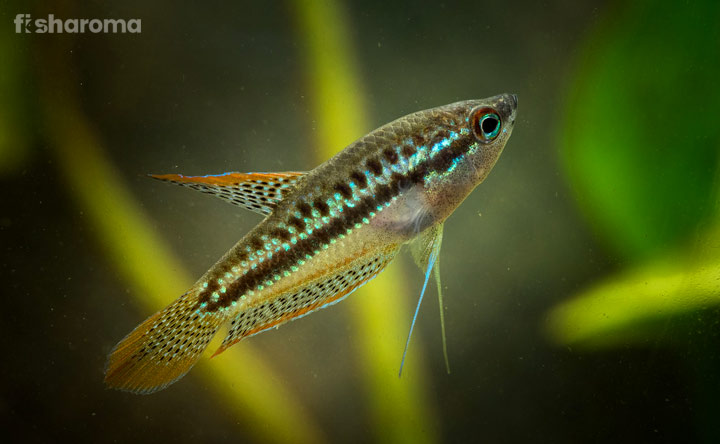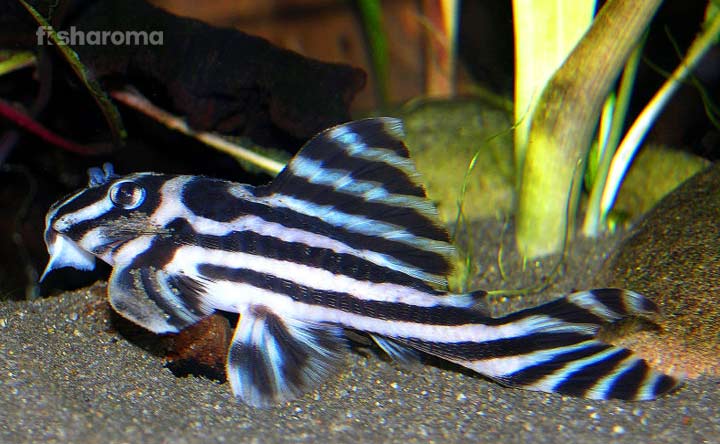Samurai Gourami- A Complete Care & Species Guide
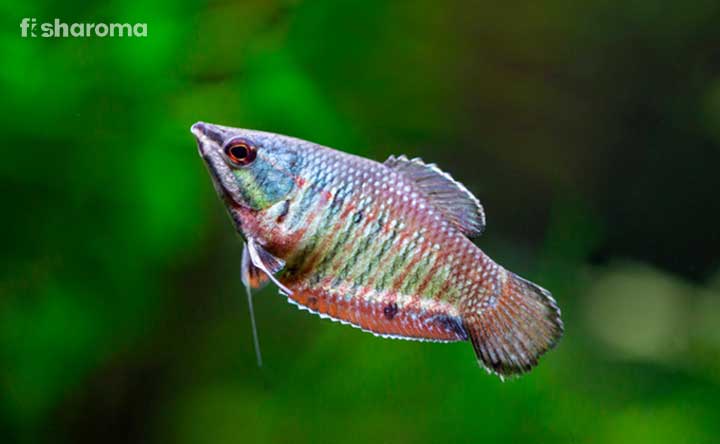
- Origin & Habitat of Samurai Gourami
- Appearance of Samurai Gourami
- Behaviour of Samurai Gourami
- Lifespan of Samurai Gourami
- Diet of Samurai Gourami
- Tank Requirements for Samurai Gourami
- Water Type for Samurai Gourami
- Compatibility of Samurai Gourami
- Breeding of Samurai Gourami
- Diseases of Samurai Gourami
- Summary
Samurai Gourami, also commonly known as the Zebra Gourami for its unique pattern, is an uncommon species that is not seen much in your everyday aquariums. Let alone tanks, it is barely found in its native place of origin, the Indonesian section of Borneo. Their slow swimming ability makes spotting them complicated. They are good at emulating the movement of fallen leaves found in the river bottoms. Their unique Camouflage Technique and characteristic feature distinguish them from the other breeds of fish.
It is a unique breed with unique requirements, and is mostly recommended for experienced aquarists to look after these majestic beings. A unique species without the ordinary requirement is the best way to put it, when it comes to caring and handling the fish. But do not worry, we are here to the rescue. We present you with a complete care guide on the same where we cover everything you need to know, if you are planning to add this magnificent breed as an addition to your tank.
Key Specifications of Samurai Gourami
| Origin | River in Borneo. |
| Lifespan | 5-8 years. |
| Colours/Patterns | Iridescent green with red and green vertical bars on their sides. They also have a red tail. (Female)Pale brown or greyish body. |
| Temperament | Easily intimidated and peace-loving. |
| Size | 1.8-2.2 inches. |
| Diet | Omnivorous (Prefers carnivorous diet like live fish food) |
| Family | Osphronemidae |
| Compatibility | None or bottom-dwelling species of fish like rasboras or loaches. |
| Care Level | High |
| Reproduction | Mouth-brooder |
| Difficulty | Medium to Intermediate. |
| Water type | Freshwater or Blackwater. |
Overview
Scientifically known as Sphaerichthys Vaillanti, this extremely rare species of fish is majestic, appearance-wise. The females have a very unique colour composition known as the iridescent green, which is technically a perspective-oriented illusion of colours. In simpler words, it appears different from different positions, which simply looks stunning.
There are 133 species of Gourami fishes and Samurai Gourami is one of them. They are freshwater fishes by origin, so placing them in tanks could be complicated at first, but it is not rocket science. It is recommended to have blackwater filled in the tanks, dim lighting and dense with aquatic plants. It is a quite common preference for most fishes. They are peace-loving by nature, which might make the selection of tank mates tricky, as they are not very big, or just big enough to defend themselves. They are calm and small fishes who prefer to reside in the shadows.
Origin and Habitat of Samurai Gourami
Samurai Gourami, the place of origin for these species is from a quite exclusive section of Borneo. In the South of Borneo, there is a village known as Nangah Sebroeang, where it is majorly found. The rare species is rare for a reason, it is only found in very limited regions and could be a trouble to discover as an addition to the tank. They were once rarely spotted somewhere in Florida, besides the exclusive areas mentioned above.
They are mostly found in their natural surroundings, where the natural habitat consists of black-water bodies, like pools or peat swamps, where decaying fractions of vegetation is found in ample amounts. They are quite tough for their size, they appear to survive in acidic bodies or slow-paced rivers, or similar water bodies with a similar still movement, as slow swimming is one of their camouflage techniques. The natural surrounding of the species must include floating leaves for them to swim slowly or debris works too. The presence of dense vegetation is a must.
Appearance of Samurai Gourami
This rare breed of tropical species under Gourami is well-known for its beauty, and appeal. The exquisite iridescent green colouration in females, or, even the slightly less colourful males are no less. The female Samurai Gouramis are usually identified with the markings present all over their body and unique colours, while the males can be identified with ease with the brown-ish patches. Besides the colour composition, there is a distinct shape difference between the two genders of these particular species.
The differences in both colours and features are as follows:
| Samurai Gourami- Female | Samurai Gourami-Male |
| Round and short dorsal fin. | Pointy and long dorsal fin. |
| Round belly and comparatively appear slightly bigger. | Slim and relatively smaller body shape. |
| Straight lower jaw. | Distended lump of skin around their mouth. |
| Have a red tail in the end with red markings and green vertical bars. | Have a brown to grey colour composition. |
Size
The Samurai Gourami or Chocolate Gouramis are not very big in size, standing at just about 1-2 inches. Their small size might intimidate them to share the tank with any bigger fish which may or may not be aggressive. Not only they are rare, but they also have special requirements in the tank other than complicating the choice of tank buddies, mostly budding from their small size. Although, the unique body shape helps in separating the two genders and prevents confusion.
Colour
Samurai Gouramis have a very unique and appealing set of colours, especially in females. The males although, have comparatively basic colour sets of brown or grey. Females on the other hand have a unique iridescent green colour merged beautifully with zebra-like reddish stripes. Hence, the nickname of Zebra Gourami or Chocolate Gourami for the other.
Behaviour of Samurai Gourami
Samurai Gouramis are peace-loving fishes. They are not very aggressive and they prefer to mostly hide in the shadows, or dense foliage. They are small fishes who swim slowly in still waters, and are mostly seen emulating the pace of fallen leaves on the surface.
They are quite complicated when it comes to paring them up in the tank. For starters, their size prevents them from having enough defence or strength to stand up against bigger fishes. If they are the attack and preying type, or anything even close to predatory, the samurai gouramis might just end up as prey. They will either be unable to protect themselves, despite their sharp defences, or they will just get overpowered by the contrasting behavioural aspect of other breeds.
Other than being rare and expensive, they are complicated to deal with, in the aquarium. Aquarists with experience are usually recommended to handle them as a result of their expense, and special needs. If the needs are met, the expense might still be a tricky choice to handle as they don’t live past 8 years (more on that upcoming), tops 10. But it is not all tough, as they make their worth with their appearance and appeal in the tank. Their rarity also adds up to the royalty-psychology when it comes to making choices for your aquarium.
Lifespan of Samurai Gourami
This majestic breed may appear so beautiful and unique, but they, unfortunately, do not live for very long. They are very expensive and hard to find, yet their lifespan is only about 5-8 years, which naturally cuts short in the developed environment of aquariums. No matter how hard you try, one can only do much to meet their specific needs and not provide all aspects of it.
Naturally, they are kind of naive with tank mates as they do not have too many defence tactics against colliding ones, but they do not really live past 10 years in captivity either. It might appear like a long-term thing but their nature cuts it short. They are not only hard to keep alive but they are highly prone to diseases. Hence, all the complexities affect their mortality rate. Keeping the honest cons aside, an intermediate level aquarist can easily handle the responsibilities with care and skill.
Diet of Samurai Gourami
We are well aware of their omnivorous diet by now, yet, they like the carnivorous diet over the herbivorous. In simpler words, they like to feed on prey like very small crustaceans, worms, larvae of small insects or zooplankton. They are not a fan of plant matter, but, can be fed live or dried fish if the mentioned food items are not available.
Tank requirements for Samurai Gourami
They might be rare but their tank requirements are special. They are complicated to keep alive by themselves and have a very limited range of compatible tank buddies. You must try your level best to emulate their natural surroundings or at least get close to doing so in the most humanly possible manner.
In an attempt of making things less complicated for your choices, we are here to ease it all by, stating a few things that are a must for you to follow:
Tank Size
They can easily survive in a tank of about 20-30 gallons.
Substrate
The choice of substrate must be sandy with live plants and driftwood.
Filter
Usage of aquarium peat is important for the maintenance of the right levels of acidity. It acts as a good filter for the tank, where the precious gouramis reside. A reduction in the flow of water is recommended, as, their natural behaviour consists of slow swimming in dead rivers with slow-paced movement.
Ornaments
Presence of fallen leaves is the closest thing to emulation of their nature, it is good if it’s made possible in the tank. Provides them with comfort.
Lighting
Optimum lighting, preferably dim, is recommended in the tank to make it easier for them to reside in peace and comfort.
Presence of Flora
Presence of thick vegetation is important to support their preferable hiding nature. Plants or even small pots of flowers can provide enough room for the same. This also generally increases the aesthetics of the aquarium itself, other than serving its purpose. The presence of natural elements in the tank makes conditions more favourable for them.
Cleaning method
Aquarium water must be changed in due time. They originally belong from sections of the water which does not change much so often alteration of the tank water is not necessary. Still, you must at least try to work on it weekly.
Water type for Samurai Gourami
Shifting focus from other factors, let us focus on the type of water you must provide for the fellow fish breed if you are planning to add them in your aquarium must-have list.
Making it easier for you, we are providing you with the water parameters necessary for the samurai gourami below:
| Type of water necessary | Freshwater/ Blackwater. |
| pH | 4.0-6.5 |
| Hardness | 1-54 dH and 0 to 3.2 dGH to be precise. |
| Temperature | 21-26 Degrees Celsius (approx.) |
pH
The pH must be between 4.0-6.5. It is important for the breed’s health.
Hardness
A water hardness of 1-54 dH is recommended. That level of mineral concentration is necessary.
Temperature
A minimum temperature of about 21-26 Degrees Celsius. They like their water to be on the warm side, the minimum temperature or to be precise, the temperature range must be followed.
Compatibility of Samurai Gourami
The Gouramis prefer to stay in school of at least 3 to 4 fishes at a time. Still, we recommend you to keep a fewer number of males in the tank. If you’re considering a school of them, as it may prevent chaos as a result of aggression in the tank.
Suitable Tank mates for Samurai Gourami
As they are not big in size, it is easy to mostly pair them with other small fish. Still, no worries. We got you covered here as well. Presenting you with a list of a few compatible tank buddies for our little and majestic beauties right below:
- Corydoras (Bottom-dwelling)
- Harlequin rasbora
- Tetra fish (some)
- Kuhli loach (Pangio species)
- Rosy barbs
Some tank mates which are not fish are also a good pair-up option for the samurai gouramis. They are:
- Dwarf crayfish
- Amano shrimp
- Mystery snails
Unsuitable Tank mates for Samurai Gourami
Ideally, it is not suggested to keep them with bigger species of fish. They are not very big in size and naturally prefer peace, or camouflaging in the shadows of the water bodies or intense vegetation. Thus aggressive or predatory fishes of any kind do not sit well with the dynamics.
Breeding of Samurai Gourami
Samurai Gouramis are not usual breeders. Their breeding technique is called mouthbrooding, which is basically an oral or buccal incubation procedure. In this case, the male fish at the time of breeding carries the eggs in their mouth. Simultaneously, the females appear in the task of defending the territory. Around the spawning period, the male fishes might appear brighter than usual but never more than females, even in their base form.
Under aquarium conditions, mating and breeding of this specific breed can be complex. The female might supposedly lay her eggs on a dead or fallen leaf or on the tank substrate. The male follows by collecting up the eggs in their mouth (following the norms of mouthbrooding) and protecting them till the off-springs are born without consuming them. A usual procedure time after that ranges from somewhere between a week to about, approximately 3 weeks. Typical breeding might cause the birth of about 10 to 40 off-springs, if it goes right.
Diseases of Samurai Gourami
Just like any other species of marine wonders, Samurai Gourami, in case they are not taken care of in a proper manner will get infected. Their rarity comes with not just maintenance complexities, but consequences.
Here goes a list of diseases that can affect these precious beings:
- Fungal infections
- Bacterial infections
- Parasitic infections
- Nitrate-related diseases
- Bloating as a result of intestinal worms in females.
To prevent that here are a few things you can do:
- Prevent pH imbalance.
- Avoid polluting the water or allowing water pollutants to affect the water.
- Keep the tank conditions optimal.
- Prevent high nitrate levels.
- Filter the tank water more often if you notice certain warning signs, like fins appearing more red or colour turning darker than usual.
Summary
Samurai Gouramis are a rare, unique and majestic species. They may be complex for keeping purposes, but they are beautiful and beneficial for the aura of your aquarium. They are cute and small fish. Feeding or breeding them is not rocket science, but just some knowledge, expertise and consistency fixes it all.
Similar care guides that may interest you
- Dwarf Gourami Care Guide – They look like a splash of vibrant rainbow colours in the tank, these beautiful fishes originate from India.
- Sparkling Gourami Care Guide – These fishes possess a very interesting ability to make sounds besides their majestic look, which is a given. Not only they are skillful as a matter of fact, they are beginner-friendly.
- Honey Gourami Care Guide – Seen in brackish water as well, this freshwater species live up to 4-8 years.

